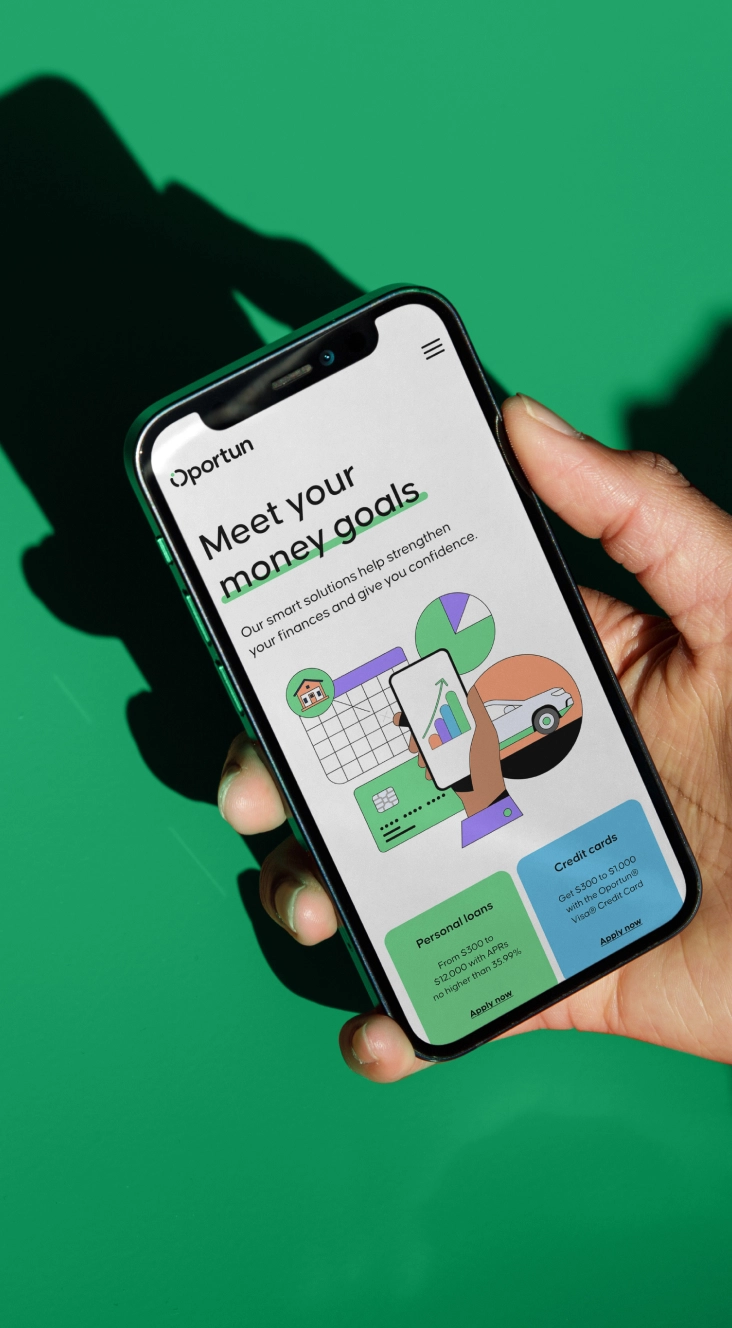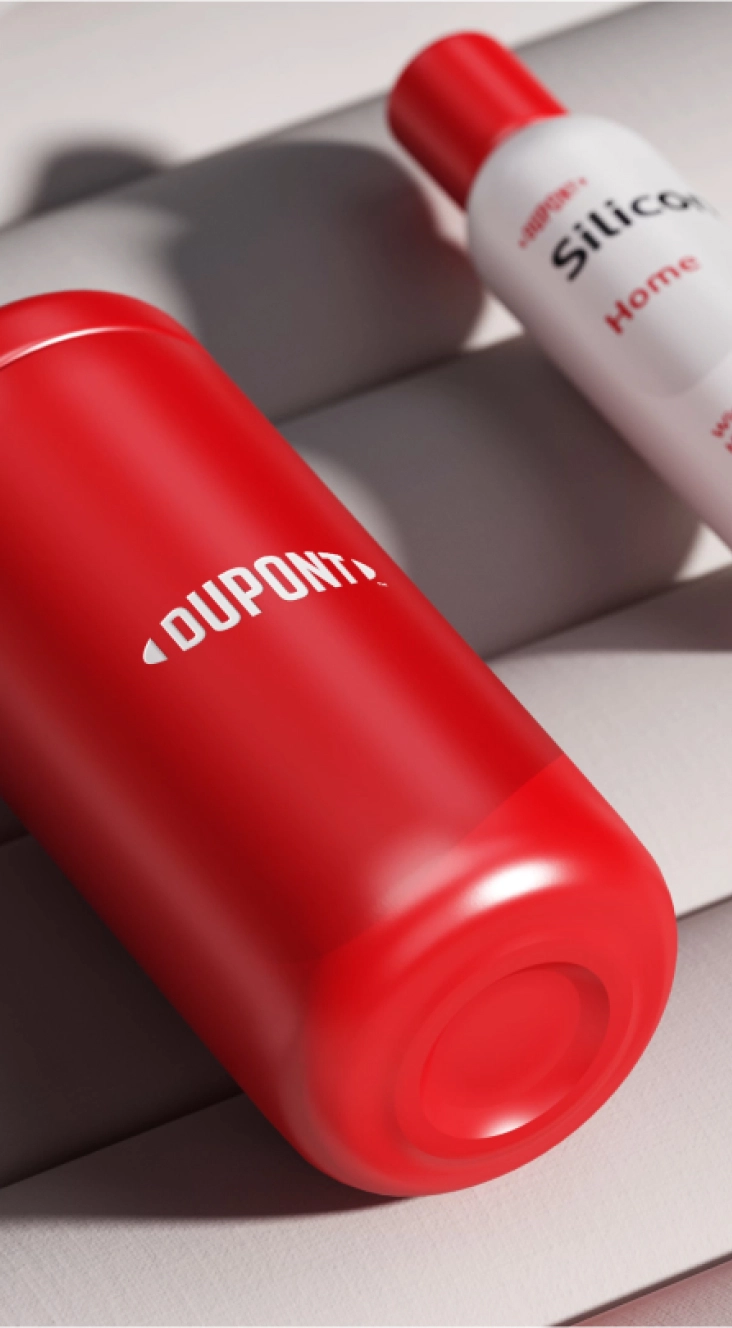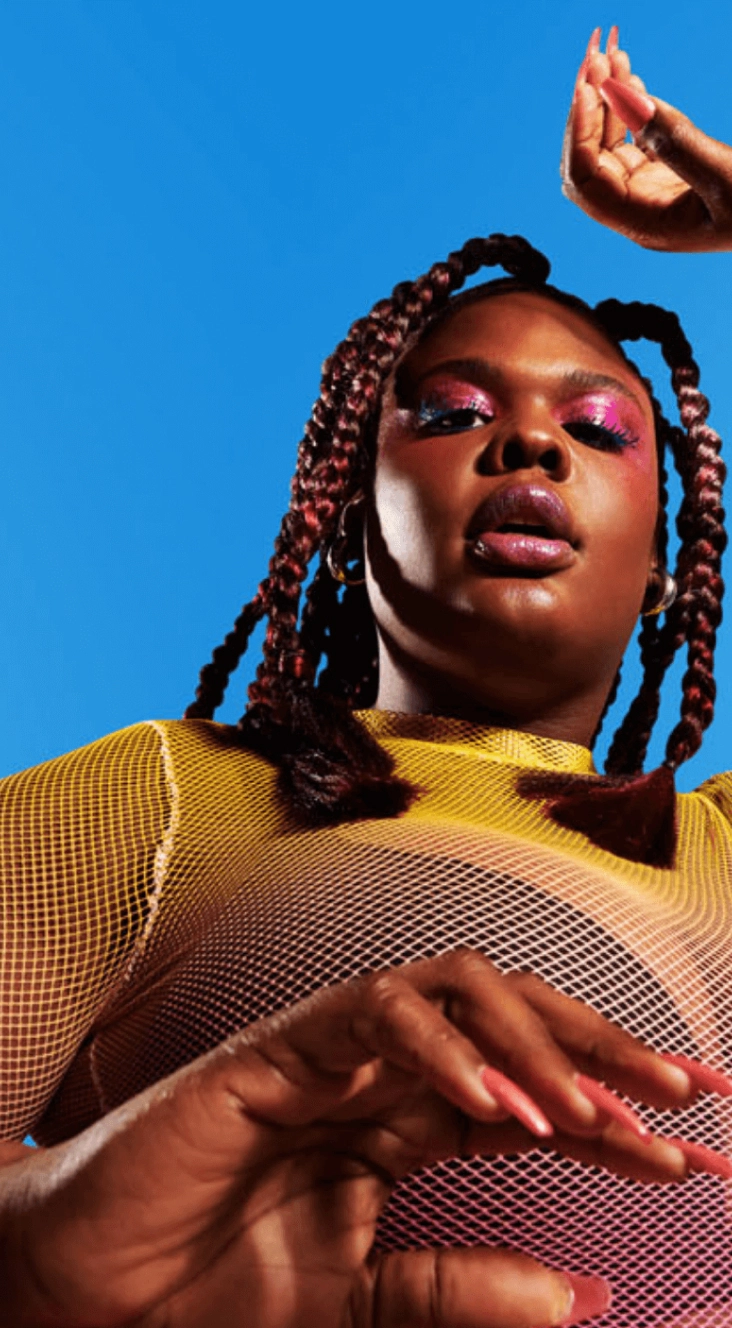Webinar Rewind: Episode 1
Why chasing brand differentiation isn’t always the right thing to do
Episode 1 of our webinar series, the Modern Marketer’s Toolkit, explored a startling but clear picture: based on our recent Brand Aperture® data, only 5 percent of brands are considered unique to customers despite billions of dollars spent on marketing annually. This episode unpacked how to stand out as a 95 percenter.
Highlights include:
- Insights from Lippincott's extensive consumer research, which involved surveying over 100,000 consumers to evaluate the market differentiation of more than 800 brands.
- Live surveys with marketing leaders from today’s biggest brands touching on brand distinction, loyalty and more. We unpack why most marketers focus on differentiation, and why they need to pivot to meaning.
- Tangible brand examples that show real value comes from driving connection with customers and enabling them to make progress in their lives, along with actionable steps marketers can take.
- How to drive financial impact: brands considered meaningful in Lippincott's survey experienced more than five times the average revenue growth, compared to brands seen as transactional.
Chris Ciompi: Hello everyone from sunny Los Angeles. It's lovely to be here with you today. I'm joined by my colleague David Pianin. We're going to get right into it and start talking about the research we’ve done over the past four or five years to more than 100,000 consumers. And it has turned this result right back to us: that consumers believe that only 5% of brands are unique. And so, the likelihood is that you are working at one of the brands that is in that 95%, right? That is not in that 5%. So, what we're going to try and answer today is what do you do if you are in that 95%?
So, we're going to do a poll to kick it off, and it's very basic. How important do you believe it is for your brand to be unique? We got a scale of 0 to 10, think NPS here, right. 10 being extremely important, 0 being not important. How important do you believe it is for your brand to be unique?
So maybe while these answers are coming in… David what do you think? I mean you've been consulting at Lippincott for almost a decade now. Are you seeing people being super concerned with this? Are clients concerned with this?
David Pianin: Yeah we'll talk about it today. I mean distinction, am I different, am I standing out, it's a question that we get asked probably more often than any other question I can think of. The temptation is there to be different and to stand out, whether that's right or wrong. We'll talk about it but I'll be interested to see what people joining our webinar have to say.
Chris: Got it. I mean it looks like these results are lining up with extremely important and the next down is over 50% and then plus 20%. People are really thinking about this.
Okay, great, so you're in the right place. Let's get into the content then, David.
David: Great. Well, I'm glad everybody has joined us, and we'll start with a little bit of an overview as to who we are at Lippincott given hopefully, we've had the chance to work together, but if not, you might not realize that Lippincott’s been around 85 years. We actually just celebrated our birthday, and for over 80 years, we've had the privilege to build some of the most meaningful, compelling brands in the world. These names and logos are just some of the examples of brands that we've worked with, designed the logos for, brought to life in a variety of ways. And at Lippincott, of course, we continue to focus on brand expression and logo and visual design, but our set of capabilities today are extremely comprehensive. For us, these columns are the capabilities that help modern Brands come to life. It involves setting compelling strategies that are likely to make an impact and bringing those strategies to life through innovative experiences, compelling design, creative campaigns and otherwise.
And what we wanted to do at Lippincott is to share some of our latest thinking across these topics and to do that we've developed a webinar series with episodes taking place throughout the year. Today is the first of those episodes which is really a chance just to share our thinking on what it takes to build a modern brand. To share with you some of the tools in the modern marketer's toolkit and today's episode like Chris had teed up—is really about the notion of distinction and an alternative way of thinking about ways to stand out and be meaningful for our audiences. And so, I'm glad you're here, I'm glad you're with us, and I hope you find some value out of the conversation we'll have today. And if you're interested, sign up for the other episodes as you get invitations to do so.
So, diving into today's topic, I'm going to start by poking a little bit of fun about a metric that we all obsessed over many of us on this webinar to the poll results we just saw are thinking about differentiation, and I'm going to poke it in the eye a little bit. I'm going to talk about why differentiation might be more distracting than helpful as a metric. I'll then introduce an alternative to differentiation, something that we call at Lippincott brand
Meaning. It's something that we think we deserve to obsess over and that we should fixate over rather than differentiation and then we'll talk a bit about what means for practical purposes what can we do as marketers and brand builders to build meaning into our brands. And we'll of course reserve time for Q&A at the end but don't hesitate to drop a question into the chat if you've got any along the way.
So this is an interactive webinar, so we'll hold ourselves to that. One more poll to hear from you all. I'm curious to hear how if you regularly track brand differentiation, clearly it's something that you all are thinking about in your organization. Are you tracking the degree to which your brand is seen as different. Yes or no. Let's see what you all think. Take about 20 30 seconds and we'll find the results.
Chris: You know David, when I was at Liberty Mutual, we invested quite a bit of research into this and kept thinking kind of had a drum beat about we have to be top three in terms of unaided awareness because people will only quote three companies for car insurance and so how can we be in that top three. It must mean that we have to be different and we kept chasing difference and difference and difference, this is probably about 10 years ago. So I wish that I had already known what you were about to tell you.
David: Well let's see the results. It looks like a good portion of us are tracking differentiation on a regular basis, 40%. But the majority actually aren't, which is interesting. You know, it does seem like a question, a topic that is very top of mind to the first poll but maybe not something that we obsess over in measurement, which I think is a good thing for reasons that we'll get into.
Does this surprise you, Chris? Looking at the results?
Chris: I guess so. Yeah, it was just so cornerstone to our thinking about why someone would choose us and not choose one of our competitors.
David: Yeah, well, I think it's a good thing, again, that it's not something that too many of our trackers or measurement systems are maybe oriented around because, you know, at the highest level when we think about differentiation, this is a question that whether you track it or not you've either said this yourself or you've certainly heard somebody else say it which is “we should really differentiate our brand just as long as we differentiate in the exact same way as all of our competitors”.
And the reason I love this little comic is because it reveals the tension that I think we all feel as marketers and brand builders which is this temptation to stand out to cut through. To be different but inherently the risk aversion around that if we're different naturally you're taking a risk because you ask yourself maybe there's a reason nobody else does this. Maybe there's a reason that everybody is doing this one particular thing and if we're choosing not to, “boy is that my job on the line for steering us in a different direction”. And so there's this urgency to stand up out but this safety net of not wanting to stand out too much. And given that tension, you know there's this obsession that we all feel about being distinct in the right ways and this obsession over distinction has led brands to do some questionable things. We all see examples of this out in the world and I'll unfairly pick on a few of these examples but I hope they're demonstrations of the bigger trends that we all see when you just chase differentiation for the sake of differentiation.
The first one sounds tastier than it might have actually been at the time. So Burger King, trying to cut through in the QSR category (quick service restaurant) launched what they called at the time Satisfries. I'm curious, we don't have a poll for it, but, how many of us had tried a Satisfry? They tried to do this to obviously stand out in the category that's extremely competitive with fries that were healthier, but it was differentiation that no one was necessarily asking for. Presumably, people eat fries because they're indulgent, not because they're looking for a healthy treat. And Burger King quickly shut down Satisfries shortly after it was launched. Yes, it helped them stand out, but it likely did not help them deepen their relationship with customers.
Another example Quibi, a quick flash in the pan that we might have all remembered back in 2020. Quibi had an interesting model that tried to cut through an increasingly competitive streaming market with content that's bite-sized. It was meant to be content you could watch on a commute or in super small bitesized chunks. But unfortunately of course a little known thing called the pandemic helps to derail Quibi but at the same time it was differentiated but perhaps on terms that nobody was quite asking for.
And another example of standing out but perhaps not standing for the right things. And Quibi shut down within a year.
Chris: David on Quibi, I looked up, they spent $63 million of advertising in six months and over a billion dollars to create that content.
David: Yeah, I mean, it was certainly an interesting model, and I think it caught headlines partly because of how unique and differentiated the model was in light of us all binging the Netflix and Amazon primes of the world. This felt novel, but again, this notion of being different for the sake of being different is part of the problem, and the obsession over differentiation makes ideas like this at the time feel more compelling than they might actually be.
Yeah and then the last example we'll pick on and perhaps the most kind of stomach queasy example is Bic at the time trying to differentiate in the world of pens by attracting women into the category with this particular product, and they did so by really just using pastel colors, and it reinforced all the gender stereotypes that we all hate to see it was a way to stand out to be different, but it's not something anyone at the time was asking for, and they got a lot of blowback and push back for doing this for fair reasons.
And so again all of these examples are really just demonstrations of the risk of chasing differentiation. Of wanting to stand out and doing things just to stand out without thinking more deliberately about what terms you're trying to be different on, what people are actually asking for. And you know, Chris described the data that we collect at Lippincott, which shows this interesting statistic, which is, of all the brands that we track, and we've tracked over 800 Brands over the years, only 5% of brands are actually seen as distinct by the people that use those brands.
And so despite all of this investment, this effort to be different to stand out, very few managed to actually achieve that. And so we asked ourselves why is that the case? Why are brands trying to stand out but failing to? And the bar is extremely high to stand out. And when you look at the brands that do cut through, those 5% of brands. There's something interesting about these unique brands which is that they tend to have fundamentally novel business designs or product Innovations.
Some of you might be tuning into this webinar on the Apple Vision Pro. I'd be interested to know if that's true, I wish we had a poll on that one. But we could all agree on the incredible ecosystem that Apple has built. I've been driven to the brink of exhaustion by Alex Toussaint riding a Peloton ride in my living room. That's an incredible Innovation that I've certainly taken advantage of, and Tesla, you know, arguably has set the standard for electric cars. Now, that has changed as others have entered the category, but I think we could all agree they were groundbreaking at the time.
And we could all also agree that brand plays a role in helping these organizations cut through. We're not suggesting Brand isn't involved and Brand should have a seat at the table to help create these innovative products that cut through, but I think we'd also agree that brand is just one of the many levers pulled to help these brands cut through and actually earn a spot as one of those 5% of brands that are actually unique. So it's an extremely difficult bar to reach, to become one of these brands that are novel. And brand and marketing are just two of the many levers that it takes to become these cut-through brands.
And beyond being difficult to attain, distinction for us isn't even something that you need to keep customers coming back. Another really interesting observation from our research shows that there are lots of brands that have a loyal customer base. Brands whose customers will say I'll come back every time that I have a need that that brand can fulfill and what's interesting about those brands who have loyal customers is that many of them are not seen as distinct by those same customers in fact nearly 90% of the brands that we study who have high Customer Loyalty are not seen as distinct by their customers and so that tells us that if the goal you're chasing is to keep your customers coming back and of course attract new customers to your brand. You do not need to be distinct to achieve that, and there's a little bit of that pink circle outside of the blue. There are some brands that are distinct but don't have loyal customers. Again, this reinforces this notion that you could stand out for the wrong reasons, and so for us, this starts to paint a bit of a paradox right, which is that distinction isn't within reach for a lot of brands. If you're the apple or the pel or the Teslas of the world that's fantastic for you, you've got incredibly unique propositions and business design elements that help you cut through, but for 95% of the brands, it's much more difficult to stand out.
Secondly, we've seen that distinction might not be within the direct control of marketing and brand building. Of course, we want to see it at the table to design new products and services that cut through, and we will always fight for that seat at the table to do that. We think innovation's better when it does, but it doesn't always happen.
And then lastly what we've seen in the data is that distinction isn't even necessary to earn a customer that's loyal to you. But yet despite those drawbacks of obsessing over differentiation it's still something we all crave. It's just part of who we are, it's in our bones, we want to stand out, we want to cut through. And so you know for those who have watched True Detective from Jodie Foster you'll remember her often saying “that's the wrong question, differentiation is the wrong question to be asking”. And I'll be honest: I've never seen True Detective, it is one of Chris's favorite shows, so he made me put this slide in.
Chris: That's right. You're asking the wrong question over and over again. We've got to get to the right question, man.
David: Right, so I'll certainly tune into True Detective. apparently, Jodie Foster is incredible in it, and the line that Jodie Foster continues to say, “that's the wrong question,” applies very much to the topic we're talking about. The question should not be how to be distinct, which focuses on you, your team, and your organization on beating the competition; if I obsess over being different, I'm obsessing over what others are doing and how I can be different than what they're doing.
Instead, for us, the better question to ask is how to be meaningful because that question starts to focus not on the competition but on the customer. What are they asking for? What do they need? And I should care less about serving those needs in a way that's distinct but rather serving those needs in a way that's as good as it can possibly be. And we'll unpack what we mean by meaning, but for us, that's a really important reframe.
And at Lippincott, when we talk about Brand Meaning, there's really two fundamental dimensions that we define Brand Meaning.
As the first dimension is this notion of connection, the degree to which people who use a brand love the brand. It's an emotional bond. A brand that has deep connection is meaningful and it's a brand that's not just transactional. Spotify as an example is not just a platform for listening to music, it's a place where I can discover new music, it's a place where I can celebrate my unique musical tastes, it's a place where I can discover concerts that are local to where I live and actually see my favorite artists perform, it's a brand that 65% of people who use the brand say that they love it. And that's an incredibly high bar to reach that Spotify has managed to reach. So it's a great example of one of the dimensions that's core to being meaningful which is earning connection. To be a brand that people love.
The second dimension that's important for brands to be meaningful is this notion of progress. It's not enough to be loved. You have to be a brand that helps people do things that they couldn't do before. You've got to break boundaries. You've got to help people reach further than they could have reached without you.
Airbnb is a great example. In our data, nearly 60% of people who use Airbnb agree that without Airbnb, they wouldn't be able to do the things that they want to do. It's a brand that helps people feel like a local in a new destination to experience things that they otherwise couldn't experience. And so you need these two components, two sides of the same coin. To be meaningful you've got to have deep connection and you've got to enable progress.
And what's interesting about this metric that we call Brand Meaning is that for the
brands that have achieved meaning that have deepened connection and enabled progress, there's business benefits to achieving that. These brands are growing five times faster than what we call transactional brands, the brands that achieve neither connection nor progress. Which shouldn't come as a surprise for a user. If a Brand's meaningful for me, I'm going to give it more of my share of wallet. I'm going to continue coming back. I'm going to stick with them through thick or thin, I'm going to give them permission to mess up when something goes wrong, and I'm going to forgive them more quickly. And the business result of all of that is faster growth faster topline growth.
And at Lippincott as practitioners and helping our clients build meaningful brands, we've kept a pulse ourselves on studying how meaningful different brands are. And so over the past five years, we've diagnosed over 800 brands through surveys with over a 100,000 consumers to tell us what they think about different brands and this has taken place over nine different countries, and it's helped us understand what brands are in fact meaningful and which ones aren't and why and what it takes to be a meaningful brand.
And so as a little bit of another snapshot into what we've learned in that data, enough of me talking, I'll open it back up to a poll. So I'm curious, when I show you the next three brands on the screen, T-Mobile, LinkedIn, Nike. All three of these brands are incredible brands for their own right, but only one of these brands has the two factors that make it meaningful. Only one of these brands both has deep connection with its users and enables progress with its users. So curious to hear what you all think. Which single brand on this list is the most meaningful one?
Chris what do you think about these brands? Anything that stands out to you when you think about connection and progress and how they relate to all three of these?
Chris: I mean it's hard not to just look at the swoosh and just how iconic it is. No words, right? I mean, it's just at a different kind of level for me. And I certainly do feel like it helps me achieve things that are putting me on the right path for wellness. Being around longer for the kids it's doing things that I would not otherwise be able to do. And I'm not certain that that feeling is even truly warranted, it's not rational, of course I could wear Adidas.
David: Yeah, it's an interesting brand to talk about, and a lot of people seem to agree with you. Right, the majority of people who voted in the poll chose Nike as the brand that's the single most meaningful brand on the list and the fewest people chose T-Mobile.
So drum roll, please… what's the answer? T-Mobile is actually the brand that's the most meaningful on the list, and let me explain why our data shows that to be true. Nike a tremendous brand, everyone agrees with that our data shows that Nike is one of the most loved brands that we've studied for all the reasons Chris that you had mentioned. We have admiration for this swoosh, we think about the athletes who wear it when they achieve amazing things. They're the brands that we grew up admiring and wanting to put on our feet, on our bodies. But it's not today, in our data, the type of brands that enables people to do things they otherwise couldn't do. So as much as I might love Nike there's plenty of other brands today that help me live a healthy lifestyle, or that help to connect me with other local athletes, or that help me feel like I myself can be an athlete and so at one point in time Nike surely was an incredibly meaningful brand, but today our data suggests that it's really a brand spiking on just one of the two dimensions.
LinkedIn is the other example, right? LinkedIn is a brand that spikes on the other dimension, progress. We've all used LinkedIn to connect with our network to perhaps find a new job, connect with our colleagues, read insights that companies that we follow are posting, and it helps us do things we otherwise couldn't. But I rarely hear somebody say I love LinkedIn, that there's an emotional connection with the brand. So it misses one of the components.
T-Mobile manages to do both for those who use T-Mobile. T-Mobile is the uncarrier, right. It's certainly standing for something that's distinct and focused, and people care about what the T-Mobile brand is aspiring to become known for, and it also helps people do things they otherwise couldn't. They were one of the first rolls out Nationwide 5G, they're continuing to push the boundaries of their flexible pricing system, etc., and so our data suggests that T-Mobile is the one on this list that's actually best doing both of those two core components of being meaningful, establishing a connection, and enabling progress.
Regardless of where a brand is today on those two dimensions, what our data also shows is that it can be improved over time. The benefit of having tracked brands for over five years is that we can understand how a brand's meaning has fallen or risen over the years. And assume to ourselves what might have led to some of that.
So Mass General Brigham, of course, going through one of the most visible and large scale mergers of Hospital Systems in the region, has helped to increase its meaning score over the years by combining forces with Brigham in a way that has done more for patients and has stood for something bigger than either one of the brands did originally before the merger. Delta has continued to attract professional business flyers. Most recently launched in Delta sync and other types of innovative offerings to help flyers get to their destination more smartly and quickly. Morgan Stanley has done really interesting things in lending the expertise and stature of its brands to E*Trade, which you know is endorsed and part of the Morgan Stanley Enterprise in Airbnb. We already talked about how it helps connect people to destinations and ways they otherwise couldn't.
And all of these brands have taken steps to improve the meaning that they have for user users and prospects over time. And Airbnb, in the quote that you see on the page, has been very public about investing in brand marketing and presumably the benefits of that investment paying off in the increase in meaning score that you see on the page.
Now, this increase in brand meetings could really be the difference in very competitive categories. Uber is a brand back in 2019 that many of us might have felt embarrassed to use. There was the scandal tied up in its founder, there was a lot of baggage that at the time was likely holding the brand back. And what we've seen in our data is that over the last five years, an incredible rise in the meaning behind The Uber brand and a relatively stagnant meaning for the Lift brand. In this category, the benefits that has brought to Uber has been tremendous both in terms of business performance but also in terms of the reputation that we all have with Uber. And so focusing on Brand Meaning, how it can be improved, could really make the difference between losing in a competitive category or cutting through.
And so all of that takes us to more practical guidelines. If the goal is not to fixate on differentiation instead elevate Brand Meaning and track that over time, invest in building it over time. How can we do that? And Chris will talk about a few of those new principles to think differently.
Chris: Yeah, I mean, first of all, I think it's incredible to have these insights rooted in data, right? I've joined this firm only four or five months ago, and to be able to have the power of 100,000 respondents over the course of multiple years is incredible. But I think theme-wise wise what we're seeing over this data on our topic today is that there really needs to be an obsession over your customer's job to be done. And you know David, correct me if I'm wrong, but that Jobs to be Done piece is really going to fit into the progress area of Brand Meaning.
David: Right yeah Jobs to be Done is really rooted in a philosophy co-authored by our colleague Taddy Hall along with the late Clay Christensen from Harvard around understanding the progress that your customers are seeking to make in their life and how a brand could be hired, so to speak, by an individual to enable that progress. And doing that well certainly helps people do things they otherwise couldn't do before, to the dimension that we talked about. But I think it also helps create an emotional bond with brands and makes people love the brands that they're working with so there's a flavor of Jobs to be Done that applies both to connection and to progress.
Chris: Got it. And then that second one in the middle of the page “reframing being different” as being meaningfully better and I think in the measurement framework that we have here, there are some questions that are coming in about that as well, which we'll get to, but maybe there's something to be posed here. When we say, “Have you prioritized areas to outperform in ways that matter?” are there any of those that you could highlight for us, David? Within meaning, are there are there places that people should be stepping on the gas?
David: Yeah, well, I think there's a few points to make. One is that rather than fixating on doing things that others aren't, being comfortable with the fact that you can do something that others are doing if you just do it better than them. And that itself is a form of what you might call relative differentiation. And recognizing that itself is a form of being meaningful and just by nature of somebody else attempting to do the same thing, being proud that you can just do it better, than them and focusing on the small things that you can uniquely do better is a great way to develop focus and inspiration for teams around a small number of things that you could really be the best at.
When we look at what it takes to be meaningful in our data set, there are a few dimensions that are fairly universal and then a whole bunch of dimensions that are industry specifics and more difficult to talk about here.
The universal dimensions relate to showing you care and helping your users understand that you've got their best interest at heart and there are small and big ways to do that. And the other dimension is just relate to me and show me that you share my values and that we have a certain philosophy and mindset that allows you to see yourself in the brand a bit. I think those are some of the ways that we think about helping our clients reframe different as being meaningful.
Chris: Got it, and then this last one on the right, it's all about influencing, right? I do often hear from our clients or my clients at my former company or me sitting in marketing executive chairs myself, it's much easier to talk about something like demand generation. It's really clear and much more crisp, it's not perfectly clear, right, but then you start talking about brand, and you can kind of see the eyes glaze over at the table around you because you're not with your marketers anymore.
So what are we saying here about credibility and influence to embed the brand into experience? What do we mean?
David: Yeah, so I think when we talked earlier about Apple and Peloton and Tesla, for us, we are big believers in those types of product innovations and experiences. When they're at their best, they're rooted in what we want to stand for as a brand and having the ability to be in the room and at the table when product innovation, when business design questions are being answered as brand and marketers is incredibly important and will result in greater impact. The question of how to earn the seat at the table always comes up, which is how do you demonstrate the influence and value brands has beyond just product or price or features, etc.. And there's methodologies we use to help demonstrate the influence that brand specifically plays just by nature of the reputation of the brand, how many more customers are we holding on to? How many new customers are we attracting just because of what the brand is? And there's techniques that we use to help our clients isolate the value that brand brings, which helps them earn the seat at that table. Ultimately influencing product design and business design in ways that actually create greater value all around.
Chris: There's still some quantification that's happening is what I'm hearing. And we've shown some of that today but not all, and I think we have a future actually webinar about one of the pieces of value that you just mentioned.
Okay let's go to the next slide please David, it should look familiar to everyone because we are coming around to this reminder about the “consumers they believe that only 5% of brands are unique” so again we've been answering this question today about well what do you do if you're in the 95%? We want to get one more piece of feedback from you guys live here before we go to the Q&A, so on the next page, we've got one more poll. It's a fill-in-the-blank. Blank is a brand that I love, and that helps me do things I couldn't before.
Trying to think about what I would put in there. Now I have to think better than I did when I said Nike David.
Okay, great. Let's wrap up that poll so we can get into the questions and see what the results look like, please. It’s going to be hard to read out; I'd have to read everyone's answer out loud. That's kind of how that works. Well, David, if you had filled in the blank, would you reveal what your answer would be?
David: Yeah, it's a good question. You know, for me, it might sound like a cheap guess, but Peloton is a brand that has helped me. Not that I'd say I'm in shape by any means, but I stay more in shape than I would otherwise be with a bike in my living room, and it's certainly a community of people that I tend to gravitate toward. When you see someone in a Peloton shirt, you give them that virtual high five on the street, and so for me, it’s certainly a meaningful brand.
Chris: Got it. I am seeing some of the results coming in now. I saw Samsung come in, Target, and Amazon. So yes, all brands important to my life as well.
Okay, so David, some of these questions are specific to specific pages, so I'll direct us back to those. The first one is about page 23, and it's going back to the two dimensions of meaning. And so the ask is just to unpack them a bit more, and then there's a specific ask about progress. So the specific ask about progress is what is it really that we're saying, is there something about what you have to do, what do we mean?
David: Yeah, well, fundamentally, when we say progress, we mean that a brand allows the people who use that brand to achieve something they couldn't achieve as effectively with others. And that's going to mean a different thing for each category and it's important to understand exactly the types of customers you're trying to win and the specific forms of progress those customers are seeking to make in their life. And so when we work with brands to help them enable progress, it starts by understanding well who is it that you're trying to enable progress for. And the deep Jobs to be Done research that we often do here involves an exploration of where individuals encounter moments of struggle and frustration because they're not able to achieve the thing they're trying to achieve. And how can a brand intervene in a way that helps them overcome that hurdle.
And to be able to stand for that dimension, that helps people progress and overcome that hurdle is really the foundation of what we mean when we say enabling progress.
Chris: Got it. Thank you.
Okay, another question. This one is not pinned to any one slide. It's about working with small brands and how do you recommend measuring all of the things that we've been discussing: awareness, distinction, and meaning, among the target audience when the clients just don't have huge budgets like some of these national/international brands that Lippincott is working with.
David: Well, sure, I think the brand meaning is irrespective of budgets or scale. You know it's fundamentally a mindset around caring most about how a brand can connect with their audiences and help them do things they otherwise couldn't do before. And focusing on that and what it takes to create it can be done whether you're a startup or an incredibly large 100-year-old Enterprise.
And we've seen both types of organizations apply it effectively.
Chris: And same idea then for something like B2B versus B2C?
David: Yeah, B2B versus B2C is a question we often hear. Which is can this apply in both ways? And I think it has to. Any B2b organization fundamentally is going to win clients by helping them do things that they couldn't do before and making the relationship matter more than just the transaction. And so we've applied this thinking and framework in B2B contexts as much as B2b.
Chris: Got it.
Okay. One question about slide 26 and it's a kind of more general. Can you talk about that slide more so can we go back to slide 26 and then just talk about what we're seeing on the screen here?
David: Yeah, so you know, at Lippincott, we've developed what we call Brand Aperture, which is our approach for measuring and diagnosing brand profiles and how meaningful brands are. And so we invest in tracking brands performance for five years now, and it gives us a really compelling window into by category / by industry, what brands stand out and for what reasons, and how brands have changed over time. Which helps to sharpen our thinking on what it takes to be meaningful. And the screenshots here are just a bit of a visual into the dashboard we use, which is a web-based dashboard to access and visualize, and share the data within Lippincott.
Chris: Got it. Thank you.
Another question. How would you recommend using this approach when trying to build a brand of a new startup?
David: It's a good question, I think again this approach can be and should be used at any phase of an organization arguably it's even more important when you're first starting up to understand who it is you're going after and what is your product market fit. What is the reason why a user should choose you in terms of being a brand that people love and helping people do things they otherwise couldn't do before. And so really examining what it would take to build meaning is critical at the beginning and just as critical if you're a 100-year-old enterprise, so again, I think it's a pretty universal framework and way of thinking, which is part of the power we see in it all.
Chris: Great. And then one final question here. What do you think that T-Mobile does that is making them more lovable than other U.S. Telecoms. In Canada, we're limited with our Telecom providers, and no one loves any of them. So how does T-Mobile stand out amongst all their competitors with so many options?
David: Yeah it's a good question. You know I think what T-Mobile did early on was recognize the state of the industry as being filled by brands that nobody really loved that didn't have at the time very much personality. And because they were the uncarrier, they ran right at it. They pointed at the fact that the industry was broken in many ways. It wasn't very friendly or favorable to consumers, and we are going to be the brand that breaks that trend. And a lot of people felt relieved to have an option that spoke to
them in that particular way and not only did they tell a story about being the uncarrier but they've consistently delivered on that through their technology. So they roll out of Nationwide 5G here in the U.S., their investment in fixed wireless, a variety of other examples that we could point to around how their proposition has enabled progress for people I think helps to deliver on the promise that their story establishes and makes them a brand that people who sign up for them feel is a meaningful one.
Chris: Great, and then I lied. There is one more question: Is there a connection between Brand Meaning and Brand Promise?
David: Yeah you know I think it's a fair question and there's always the risk of running into kind of brand suit, brand meaning, brand promise, brand positioning, brand commitments, brand values. You can go on and on, but for us, assuming that by brand promise, you really were asking about what you want to stand for. You can call it a positioning or a promise or anything else. And fundamentally a meaningful brand is meaningful for a specific reason. It is known for a particular reputation that that brand has put the stake in the ground and said this is what we want to become known for, and when we work with brands, it often starts by really understanding what it is you want to be known for. What is your positioning or your brand promise that really distills the authentic differentiators of your organization and how you're going to serve your audiences?
And the way, the route, to becoming meaningful is partly reinforcing that brand positioning to become known for what you want to become known for and do that in a way that deepens connection and enables progress, and that's part of the reason why there's not one answer for every brand. It depends on what you're aspiring to become known for. The route to become meaningful differs depending on the terms in which you want to be meaningful. But the focus is don't worry so much about your competition, don't ask what their competitors are doing, don't try to be different from them, just try to be meaningful to your customers and do it in a way that reinforces a specific idea that relates to your brand positioning or your brand promise.
Chris: Got it. Makes a lot of sense.
Okay, next slide, please, David. So we're going to wrap up for today with a little promo for the next webinar in this series which is May 16th. It'll be at the same time so 11:00 am EST. And it's all about brand value so getting more into this quantification that we started to get into here and getting deeper into that.
So, how to build preference by maximizing your perceived bang for the buck. I think we'll be getting in then to the brand value ratio, right David?
David: That's right
Chris: Perfect. Listen, thank you everyone. If we didn't get a chance to answer your question, we will be in touch with you via email. We really appreciate your attendance today and also your participation and looking forward to either seeing you at the next webinar or seeing you before then. Okay, thanks so much everyone. Bye bye.









